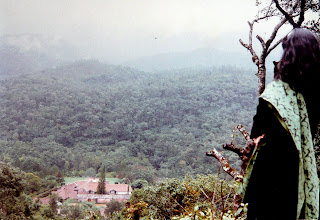Great temples of Srirangam and Tanjore

Official trips often take me to different parts of South India, outside Kerala. If a Sunday falls in between during the visit, I generally look out for places of historical interests.
Last month, I was among the ruins of Hampi, in Karnataka on the Anniversary Day our wedding and after a fortnight when my birthday came, I was at the Salar Jung Museum in Hyderabad. Obviously, these were taken with a pinch of salt by Sindhu, my wife of 28 years.
This time it was my turn to visit various places in Trichy-Tiruchirappalli- and Tanjore –Thanjavur- in Tamil Nadu. While the full fury of the south west monsoon lashed across Kerala, I was in the hotter climate of Tanjore on the summer solstice day of 21st June when the rays of the sun were perpendicular heralding the summer in the northern hemisphere.

Sri Ranganatha Swamy temple, Srirangam:
Its history dating back to millennia, Srirangam temple is one of the most ancient and great Vaishnava temples of India. Finding a mention in the great Tamil epic, Silappadhikaram, which dates back to 2000 years, this great Vishnu temple is the largest functioning temple complex in the world, spread over 156 acres.
Over centuries, the temple had been patronized by the Pandyas, Cholas, Nayaks, Hoysalas and other royalty. It has also withstood many invasions over centuries.
The mandapa with 1000 pillars and the Dasavatharam temple are some attractions of this large complex where you can get lost if not guided properly. There are 21 gopurams around the complex with 7 concentric walls and over 60 temples of various deities. Some fine examples of ancient architecture could be seen here which shall indeed be an astounding experience.
Legend has it that the Orlov diamond in Kremlin, Moscow was originally one of the eyes of Lord Ranganatha, stolen from the temple around 1750 by a French deserter and smuggled out of the Country. Later, it came to the market in Amsterdam and was bought by Count Grigory Grigorievich Orlov of Russia after whom it came to be known.
 Dwarapalaka in front of the great temple, Tanjore
Dwarapalaka in front of the great temple, TanjoreA closer look will show a snake swallowing an elephant under his right foot.
Rajarajeswaram, the Great temple of Tanjore:
Often called the Brihadeeswara Temple, Rajarajeswaram was built by the great emperor Rajaraja Chola I (r. 985-1014) around AD 1010. Presently declared as a UNESCO world heritage site under the Great Living Chola Temples, this temple amazes everyone visiting Tanjore, the ancient city known as the rice bowl of Tamil Nadu.
Though I have been fortunate to visit the Eiffel Tower in Paris and the Great Pyramids off Cairo in the past, I was more awe-stuck on seeing the great temple which is maintained in pristine condition. I was also much delighted to see the old Tamil inscriptions on the granite walls of the temple from which we presently know about the construction and maintenance of the temple and about the offerings to the temple made by the great emperor.
These inscriptions tell us of the great army which protected the temple as also about the people who were entrusted to manage the affairs of the temple. It informs us of several gold vessels and jewellery gifted by the great Chola for use of the temple. We also learn about Krishnan Raman his military commander as also about Esana Sivapandita, the Rajaguru. Many villages were gifted to the temple for its upkeep and the temple had 400 dancing girls as also 50 singers of hymns. 100 musicians played various instruments there and Sanskrit dramas used to be staged. Special arrangements were made for the monthly and annual festivals. The engravings were supervised by a high ranking royal officer. We learn that Adithyan Suryan alias Tennavan muvendavelan, a high ranking royal official was in charge of overall administration of the temple. The chief priest was Bavana Pidaram.
Designed to represent a cosmic structure, the Mahameru, the temple’s superintending architect (Thacca Karyam) was Kuncharamallan alias Rajaraja Perumthacchan.
One of the two gopuras, a five stage one, in front of the main structure and depicting various forms of Shiva is called Keralantaka Tiruvasal, obviously to commemorate Rajaraja’s victory over the Kerala King Bhaskara Ravi Varman Thiruvadi (AD 962-1019). The defeated Bhaskara Ravi Varma accepted the Chola suzerainty and started paying tributes from his capital at Mahodayapuram.

The Darasuram temple is just 3 km from the temple city of Kumbhakonam and is situated in a small sleepy village. The famous Eiravatheswara temple dedicated to Lord Shiva here depicts the finest of Chola art and architecture and is a place anyone remotely interested in our heritage, culture and history must certainly visit. Built by Rajaraja Chola II in the 12th century, the site is presently a UNESCO World heritage site. The mandapam here is in the form of a huge chariot drawn by horses. Very delicate and detailed artwork on stone could be seen here depicting various facets of daily life of those bygone days.
Here too, many inscriptions could be found. In one inscription it mentions the renovation of the temple by Kulottunga Chola III. Elsewhere, there is mention of an idol being brought to Darasuram after Rajadhiraja I Chola’s defeat of Someshwara I, the Western Chalukya king.





The stone carving of Rishabha Kunjara (Ox-Elephant) seen here is an interesting piece of artwork in that the head of these animals is common. From the left, you can see the head of the Oxen facing right whereas the elephant facing left also has the same head, so dexterously carved. Salutations to the unknown artist!
While returning home after my official visits, I decided that my next visits to these amazing destinations are to be exclusively reserved for living in the past and are not to be meddled with mundane chores of daily life and its’ demands on us.
Tripunithura, South India,
30th June 2011.











Comments
http://www.oxstyle.com/2012/07/tanjore-temple.html
http://www.oxstyle.com/2012/07/tanjore-temple.html